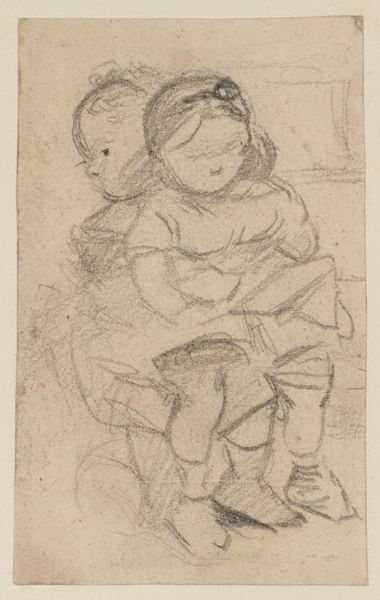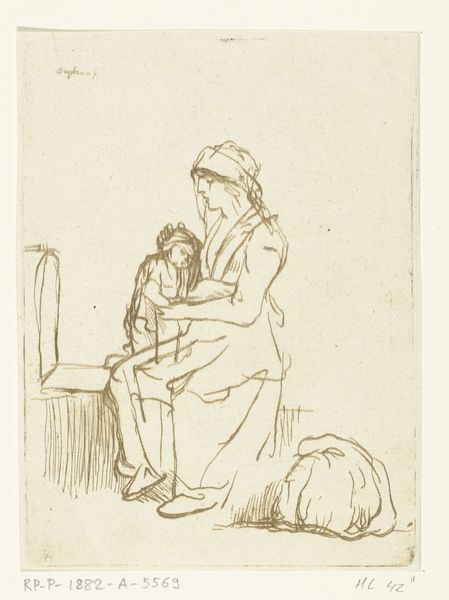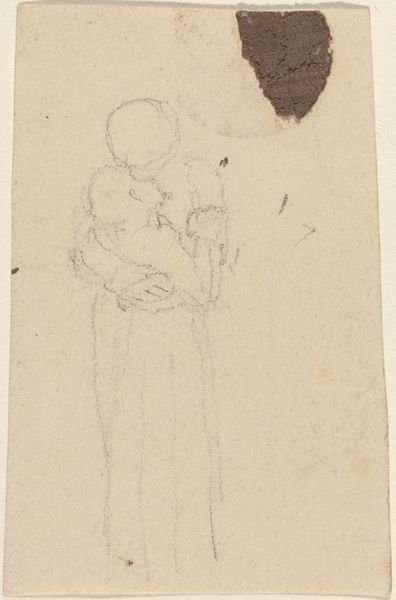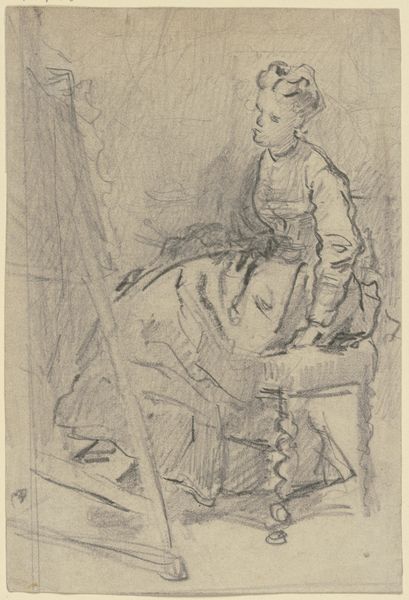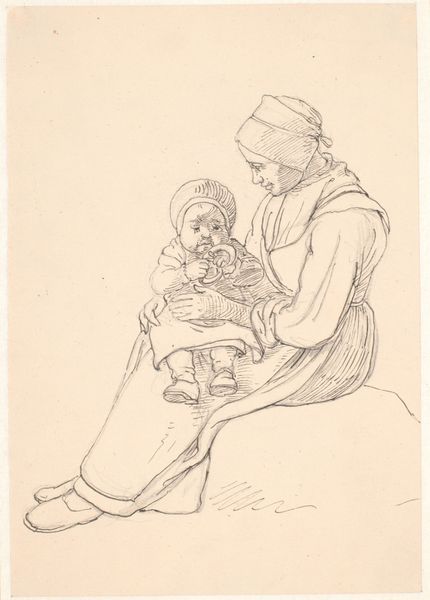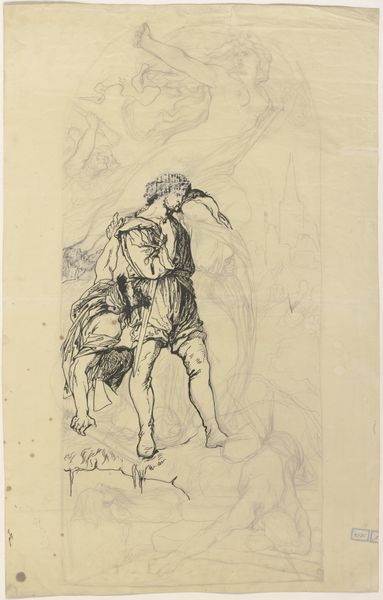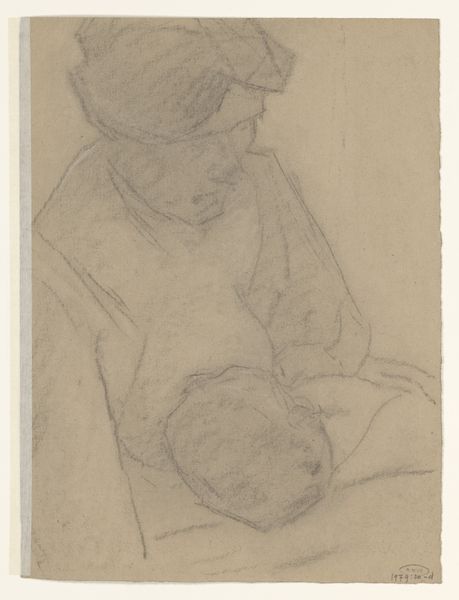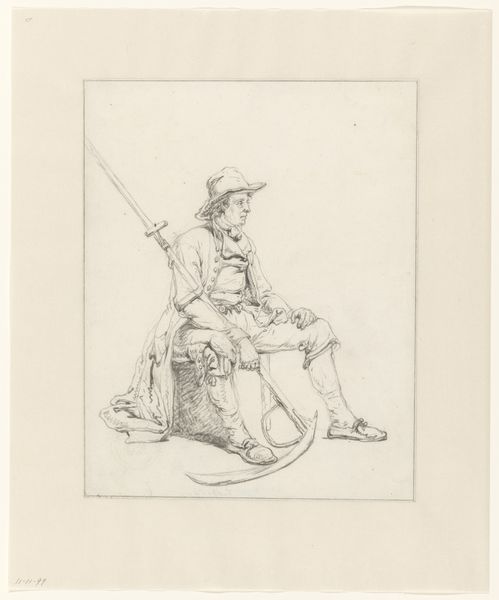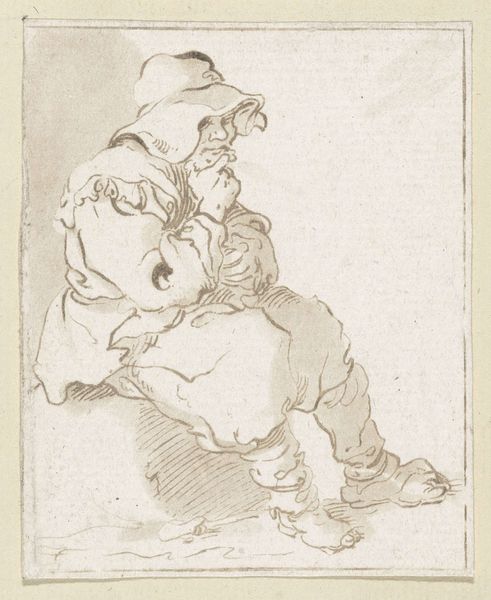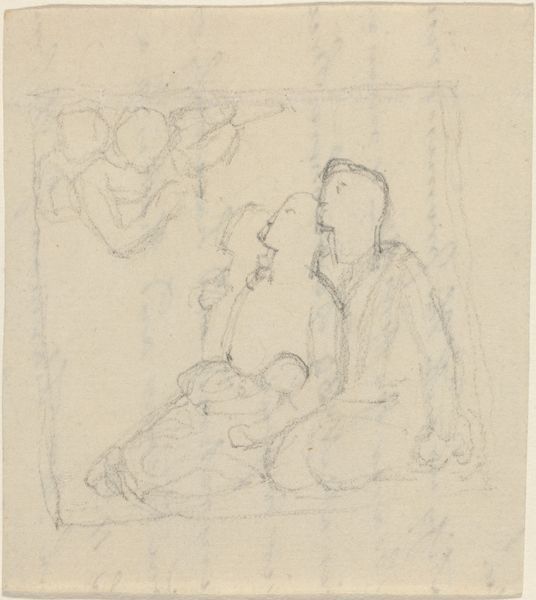
A Seated Italian Shepherd with a Small Child on his lap; verso: A Southern Landscape with a Woman Carrying a Jar on her Head 1818 - 1824
0:00
0:00
drawing, print, pencil
#
portrait
#
drawing
# print
#
pencil sketch
#
figuration
#
child
#
romanticism
#
pencil
#
men
#
genre-painting
#
realism
Dimensions: Sheet: 8 7/16 × 6 3/8 in. (21.5 × 16.2 cm)
Copyright: Public Domain
Curator: The scene seems drenched in sunlight and calm; look at the shepherd, almost dissolving into the very landscape. Editor: Indeed! This is Franz Theobald Horny's "A Seated Italian Shepherd with a Small Child on his lap," dating from 1818 to 1824. A pencil sketch on paper, housed here at the Met. What initially jumps out at you from a socio-historical lens? Curator: Honestly, the fragility. The gentleness of the lines suggests an ephemeral moment, almost as if it might disappear with a gust of wind. It’s…fleeting. Editor: Interesting that you perceive fragility. I see the artwork reflecting the changing social landscape of the time. Shepherds, traditionally romanticized figures, become stand-ins for complex labor dynamics. Look at how the shepherd supports the child. We can observe social themes, a subtle commentary on the roles of men and children within evolving structures. Curator: Hmm, I’m less concerned with the social structures, and more with the human connection here. The vulnerability between them—the way they interact is palpable. It is charged with intimacy, even within this simple, rapidly drafted composition. What does this pairing represent? Father, caregiver? Friend? Editor: Absolutely, the composition prompts reflections on family and labor. Consider how representations of the working class evolved during the late 18th and early 19th centuries. How did Romanticism intersect with evolving notions of masculinity and caregiving? The sketched "verso," depicting a Southern Landscape with a woman carrying a jar, perhaps offers a parallel reflection, framing women within a similar visual and societal structure. Curator: Yes, both characters appear linked and bound together—and simultaneously separated. Almost floating…The ambiguity invites one to bring one’s own emotions into the frame, filling in the incomplete story—becoming a character, of sorts. Editor: In conclusion, this delicate drawing presents a multifaceted look at labor, gender, and societal roles during a transformational era. We are prompted to interrogate our assumptions regarding pastoral life, the labor of men and women, and the visual representation of social identities in art. Curator: Ultimately, whether social document or study on ephemeral bonds, this simple image stays with one long after walking away. Its apparent casual nature belies something deeply moving and, yes, resonant.
Comments
No comments
Be the first to comment and join the conversation on the ultimate creative platform.
